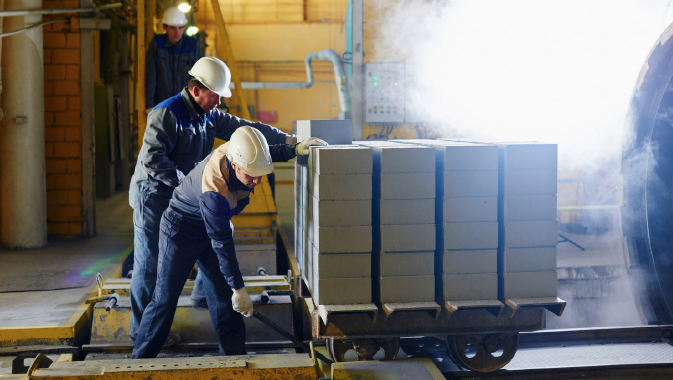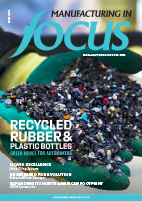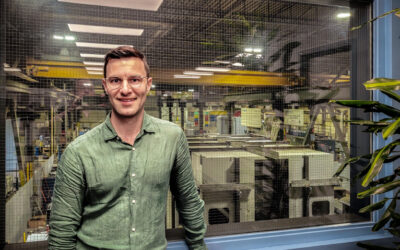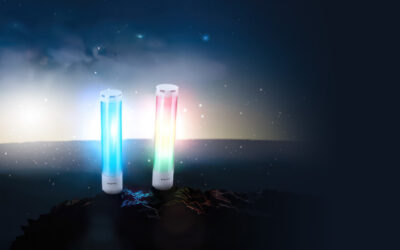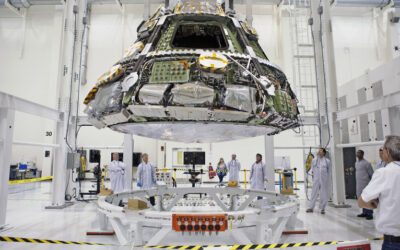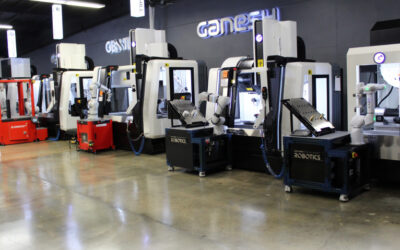Clay is one of the oldest building materials ever used by humanity to construct a permanent shelter. Archaeologists uncovered a 6,000-year-old sun-dried clay brick in Iraq, but it is likely that clay was being used long before that time, and it is being used in construction consistently still.
~
When mixed with water it can be moulded and formed, and when fired at high temperatures it can be hardened into durable solid shapes. In recent years, clay has come back into fashion as a material for dwelling construction due to properties that make it more environmentally sustainable than alternative materials.
For a material to be sustainable, its use must meet the needs of the present day without compromising the ability of future generations to meet their needs. Clay meets these criteria in a number of key ways. All building materials have an energy cost in their manufacture, but clay bricks can last, in some cases, ten times the lifespan of concrete and other materials. This greatly reduces the need for maintenance and the energy costs associated with it. As a result, the total energy cost of using clay brick is much less in the long run.
Beyond that, further environmental advantages are associated with clay brick throughout its production and use. The environmental impact of harvesting clay represents a significant improvement over many alternative materials.
Firstly, excavating soft clay from the ground is a process with relatively low costs when compared to other quarry operations such as those that harvest and process stone for concrete aggregate, for example. Secondly, clay deposits are abundant.
In many areas, limestone, granite, sand, and gravel are not available. This means that to meet the demand for concrete construction, aggregate must be shipped long distances by truck, rail, and sometimes by barge. The transport component of that industry has a substantial environmental impact. Clay deposits are prevalent, however, greatly reducing the carbon output generated by transporting material.
Once the clay has been harvested, it must be processed before it can be used as a construction material. Water is mixed in to form bricks or other shapes, and then they are fired in a kiln to harden and increase their strength and durability. This is the most expensive component of the process in terms of energy expenditure.
Kilns must be fired to more than one thousand degrees Celsius for significant periods of time. Although the energy cost of operating a clay kiln is high, it is offset by the many sustainable advantages of the resulting brick. The final product is an energy-efficient, long-lasting, recyclable building material.
To further counteract this energy expense, many clay brick manufacturing operations have taken to recycling the heat that is generated by the kiln for use in other parts of the process, making the entire procedure even more efficient. One example of how the heat energy can be recycled is in the design of the vertical stack brick kiln. This kiln is structured in such a way that the hot exhaust gasses generated by the kiln are used to preheat the unfired bricks that are in line to enter the kiln. This is a continuous process that vastly reduces the amount of energy required and the amount of carbon dioxide produced.
The Swiss Agency for Development and Cooperation developed this technology and has implemented it in South Africa with promising results. It is expected to reduce carbon dioxide emissions from the South African heavy clay industry by 100,000 tonnes per year.
Clay bricks are energy efficient not only in their production, but also in terms of their use as a building material. The true value of the material is measured by its impact on the environment from its initial collection as a raw material from a deposit in the ground, through the production process, to its use in constructing a building, and its entire lifecycle thereafter. To make more sustainable homes, builders must consider materials that offer the lowest energy cost across the material’s lifecycle.
An environmental impact study comparing ten houses using different technologies was performed by a company in Perth, Australia called Landcorp. Of the house types that were examined, nine of them achieved ratings of five and six stars, while the house with clay brick exterior cladding attained a score of eight stars. The critical component of the structure’s success was passive solar efficiency.
Clay’s thermal properties make it ideal for building a home, effectively reducing the cost of heating and cooling throughout the year. The bricks absorb thermal energy slowly during the day, over the course of six to eight hours, rather than allowing it to pass through. It then radiates that heat throughout the evening hours when the outside temperature is lower. This enables the interior to maintain a relatively constant temperature throughout the day. It is also aesthetically pleasing and resistant to wear, which eliminates the need for environmentally taxing paint and coating products.
The process of kiln firing clay bricks makes them extremely durable. Not only does this resistance to corrosion, natural decay, and wear mean less maintenance, but it also makes clay a healthier material for home building. As materials corrode, particles can enter the home and end up in the air you breathe; clay’s resistance to corrosion means cleaner air and a healthier home. Further, because clay is not painted or coated with varnish, the pollutants associated with these chemicals are eliminated as well.
Leadership in Energy and Environmental Design (LEED) is a program that provides various levels of certification for environmentally sustainable home building. The premise is to encourage projects to be self-sustaining and have a long service life, low energy cost, and minimal impact on the environment. The use of clay bricks goes a long way toward improving a project’s LEED rating. Many public, commercial, and industrial projects require LEED certification as it contributes toward a low total operating cost for the facility.
This year, a Swiss research organization known as Empa has released an innovative clay brick product. In most brick home building, bricks are used to clad the structure, and the walls are then filled with insulation. Empa has developed a brick that is itself insulated, eliminating the need for a separate insulating layer. Its product, known as the Aerobrick, was not the first self-insulated brick product, but it is the state-of-the-art by making use of an advanced aerogel as insulation.
Aerogel is like a gel except that the liquid component has been replaced with a gas. The result is an ultralight material with low thermal conductivity. This property makes it a very useful insulation material. Empa’s Aerobricks are hollow clay bricks, with an aerogel paste used to fill the cavities. Prior to these, insulated bricks using perlite existed, but Aerobricks insulate roughly one-third better than this competing technology.
For hotter climates, a pair of Columbian architects developed a specially engineered clay brick that can keep homes cool by dispersing heat. Miguel Niño and Johanna Navarro invented a brick with a semi-hollow core that has tunnels running horizontally through it and an exterior side that is angular rather than flat. This enables the brick to help regulate the temperature in two ways. First, the hollow core of the brick allows it to ventilate heat, making it harder for that heat to transfer into the home. Second, the angular shape of the exterior side of the brick deflects sunlight away from the wall and provides shade to the brick below it.
Clay bricks have been used in construction for all of human history. They last, in some cases, hundreds of years. These bricks are extremely durable, long-lasting, and require very little maintenance once installed. They are also fully recyclable after a demolition. Undamaged bricks can be reused, and crushed brick can be used as aggregate for concrete.
Clay is a non-toxic natural material; it is fire retardant, noise cancelling, and a great thermal insulator that outdoes most other building materials on the market. For environmental sustainability, clay brick is a building material with an ancient history and a bright future.

